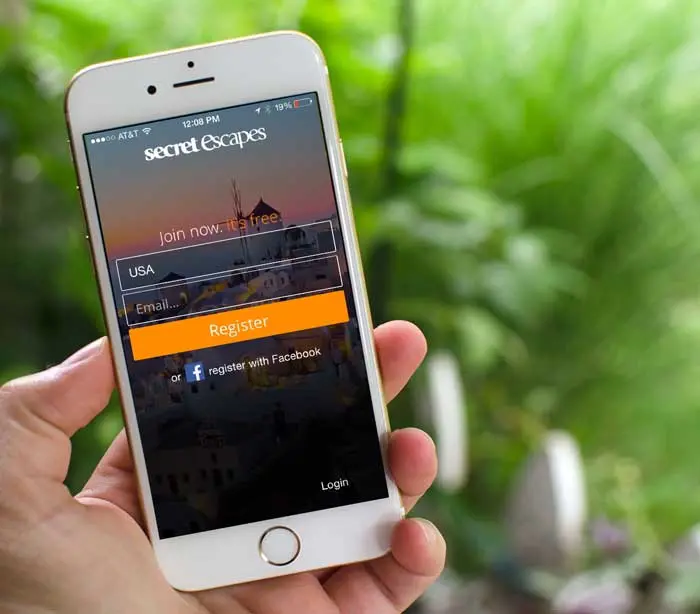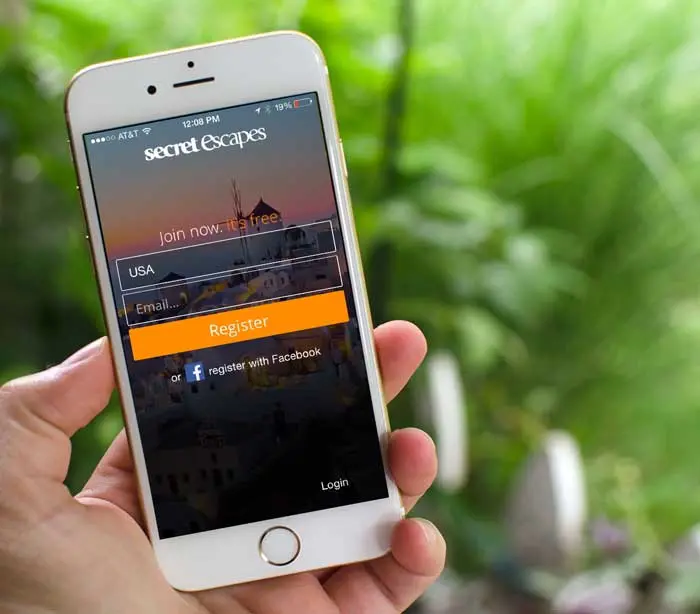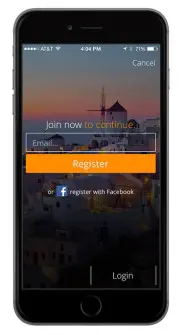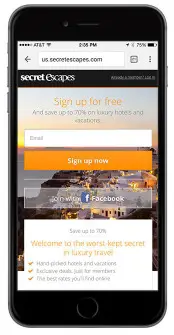How Secret Escapes Increased LTV and Doubled Signup on Mobile
Secret Escapes is a flash-sale luxury travel company that offers discounted deals on four and five-star hotels around the world. The business is growing quickly with 300% YoY growth, expanding to markets in Germany and the U.S. with a base of 10 million+ members on their iOS/Android apps and website. As a high-growth business in the extremely competitive online travel market, Secret Escapes cannot afford to make changes to any of their digital properties that might throw off this momentum. That’s why Secret Escapes runs all app and website changes—no matter how small—as Optimizely experiments first before rolling them out live.

Cara Harshman

 Secret Escapes is a flash-sale luxury travel company that offers discounted deals on four and five-star hotels around the world. The business is growing quickly with 300% YoY growth, expanding to markets in Germany and the U.S. with a base of 10 million+ members on their iOS/Android apps and website.
Secret Escapes is a flash-sale luxury travel company that offers discounted deals on four and five-star hotels around the world. The business is growing quickly with 300% YoY growth, expanding to markets in Germany and the U.S. with a base of 10 million+ members on their iOS/Android apps and website.
As a high-growth business in the extremely competitive online travel market, Secret Escapes cannot afford to make changes to any of their digital properties that might throw off this momentum. That’s why Secret Escapes runs all app and website changes—no matter how small—as Optimizely experiments first before rolling them out live.
“Virtually no change will go live on the website just like that. Everything is tested,” Sebastian Fallert, the company’s UK General Manager, said.
As a result of three Optimizely experiments, Secret Escapes has been able to:
- Generate positive ROI from paid mobile marketing
- Increase purchase conversion rates
- Increase new user signups by personalizing PPC landing pages to keywords
- Continuously measure the impact of new app and web changes
Experiment: The New User Mobile Onboarding Flow
The challenge and hypothesis around the signup gate
Before the Secret Escapes team first released their mobile app, they had a very important question to answer that faces many mobile app developers: should the app require users to sign up in order to view travel deals?
They had differing opinions on this question. On one hand, they thought a mandatory signup gate would create an exclusive community of registered users, which pleased the hotel partners offering highly discounted deals through the app. Advice from other businesses with similar models said an open app was the better option, and that mandating signup would cause signup rates to plummet and users to submit negative app reviews.
The impact of a mandatory gate on customer lifetime value was also a consideration. Secret Escapes needed to achieve a specific signup rate in order to break even on the acquisition cost of a new user. If mandating a gate lowered the signup rate, the average lifetime value of their mobile customers would also decline.
“So we said, let’s do what we always do when we can’t decide: Let’s test it,” Fallert said.
The product team used Optimizely’s iOS SDK to create and test two different mobile onboarding experiences concurrently. One experience allowed new users to skip or close the signup screen; in the second experience, signup was required, no skip button at all. With the experiment running, the team released the initial version of Secret Escapes to the App Store.
Experiment results and business impact
Defying all expectations, a mandatory signup gate was by far the optimal experience. It more than doubled the signup rate and did not lead to negative reviews or comments.
This experiment also revealed a pivotal discovery about Secret Escapes’ marketing funnel efficiency. Making signup mandatory justified the cost of mobile ad spend for acquisition by increasing the average lifetime value of each user. In other words, the LTV:CAC ratio was positive: all of the money spent to acquire the user will be matched or exceeded by what Secret Escapes receives from that user.
“If the skip button was part of the onboarding flow, we would not be able to do paid marketing on mobile. It would be very inefficient for us,” Fallert said. “We can acquire valuable users at attractive CPLs, which we are confident are going to be profitable after our targeted window—and that’s kind of a biggie.”
With the data from this test on the first-time user experience and their understanding of lifetime value for each customer, Secret Escapes can make smarter decisions about their advertising spend. They know exactly the amount of money they’re prepared to pay for a new user if they want a full return on investment.
This was the first major experiment on Secret Escapes’ app that had a drastic impact on the direction of their business model.
Continuous measurement of new experiences
At any time, Secret Escapes has around ten experiments running across their websites and apps. They hold a weekly meeting to review the testing calendar and queue of test ideas that is open to anyone across the organization. Each test is prioritized based on urgency and potential business lift.
Upcoming tests, Fallert said, will focus on the purchase conversion funnel to answer questions like: How much information do you need to disclose in each step of the funnel? Is percent discount more effective than absolute discount price? Do you show prices at all? The team previously tested all of these questions on the website but will now try on mobile “because it might be different.”
In the second installment of this series, we’ll explore personalization experiments Secret Escapes ran on their PPC conversion funnel and signed-in user experiences that are having a proportional impact on


